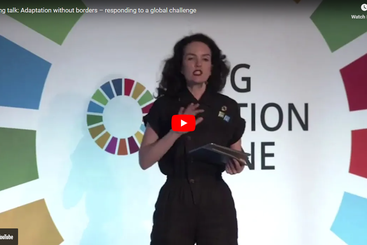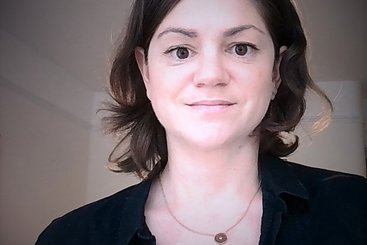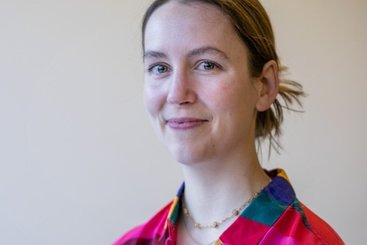The last twelve months were the hottest on record. Against this backdrop of blistering global temperatures, the pace of the climate negotiations seems particularly glacial.
Emissions are still rising. Finance is still falling short. And meanwhile, climate change is causing irreversible loss and damage to human health and life, to our cultural heritage and to the natural world. The worst impacts are being borne by those who have done the least to cause it.
70,000 people are expected to fly to Dubai for the 28th Conference of Parties (COP28), meaning that the negotiations themselves have a non-negligible carbon footprint. Many of those participants will be from the fossil fuel industry that has worked so hard to prevent and slow climate action.
Yet while the annual COPs may seem dominated by gridlock and greenwashing, they remain a critical forum to agree on the rules governing international climate cooperation; the recent scandals in the voluntary carbon market underscore the importance of increasing transparency and improving reporting.
Even more importantly, the COPs provide a rare platform for the most vulnerable countries to hold the largest polluters to account. It is thanks to the tireless efforts of negotiators from the Least Developed Countries and the Small Island Developing States that adaptation and loss and damage have moved up the global agenda. We pay special tribute to one of the titans of climate justice, Professor Saleemul Huq, who passed away on 28 October.
This year, ODI will once again be publishing rolling insights throughout the climate negotiations. Our commentaries will address issues right at the heart of the deliberations – the Global Stocktake, the loss and damage fund, the Global Goal on Adaptation – as well as international issues that are beyond the scope of the UN climate convention but will influence countries’ ambition, such as reform of the multilateral development banks or the intersection with trade and investment policies.
To kick off the series, we identify six key issues to watch at COP28. For more details, please follow our staff on the ground at @ODIclimate.
1. The Global Stocktake
The Global Stocktake is the five-yearly checkpoint on progress towards the Paris Agreement. The technical phase ended with a synthesis report released in September; the political phase will culminate in Dubai.
There is some good news emerging from the Stocktake. Commitment to climate mitigation is now near-universal and the projected temperature increase at the end of this century has fallen from 3.7–4.8°C to 2.6–2.7°C above pre-industrial levels.
However, humanity is still on track to miss the long-term temperature targets of the Paris Agreement, which pledged to limit warming to well below 2°C and ideally to 1.5°C. Even more alarmingly given this overshoot, the Global Stocktake finds that adaptation efforts remain “fragmented, incremental” and that promises of climate finance have not been met.
How can the Global Stocktake move the needle? The Outcomes document will need to go beyond re-stating the urgency of action and instead propose clear actions such as:
- timelines for the phase-out of fossil fuels and re-purposing of fossil fuel subsidies;
- targets for mainstreaming climate risks into decision-making and expanding climate information to vulnerable communities; and
- burden-sharing arrangements for climate finance provision and improved access to that finance for the most vulnerable countries.
Moreover, equity and justice must be at the heart of the Outcomes document. Any commitments to decarbonise the global energy system must go hand-in-hand with pledges to expand energy access to all. Aspirations to align finance flows with climate goals must be accompanied by efforts to improve access to affordable capital for the world’s poorest countries.
The Global Stocktake offers the chance for a much-needed course correction on climate. More ambitious action on all fronts and by all actors is now needed to secure a liveable future.
Want to know more?
Follow Dr Charlene Watson (LinkedIn, Twitter) and read the blog:
The Global Stocktake: we might know where we are, but do we know where we are going?
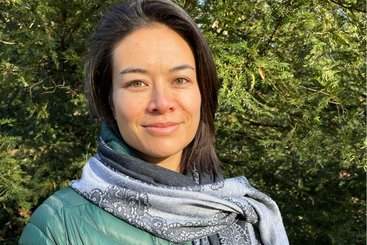
2. Loss and damage finance
One of the great achievements of COP27 in Sharm El-Sheikh was the commitment to provide loss and damage finance, including by creating a dedicated fund to serve particularly vulnerable developing countries.
For Small Island States, Least Developed Countries, and other nations on the frontlines of climate change, the progress on loss and damage finance is a victory – albeit a Pyrrhic one. The need for dedicated loss and damage finance is a damning indictment of higher-income, higher-emitting countries, which have not reduced emissions fast enough or supported adaptation generously enough to avert and minimise climate-induced loss and damage.
A dedicated Transitional Committee was tasked with designing the new fund in advance of COP28. Its meetings regularly descended into acrimony, but compromise was reached at the 11th hour: the recommendations of the Transitional Committee will now be reviewed in Dubai.
Negotiators at COP28 are likely to adopt the consensus proposal, but any country could choose to reopen the fragile agreement. Watch for debates around:
- which countries are ‘particularly vulnerable’ to climate change;
- which countries should pay into the new fund; and
- whether the fund should be hosted by the World Bank or established as an independent entity under the UN climate convention.
Want to know more?
Follow Michai Robertson (LinkedIn, Twitter) and listen to the podcast:
Think Change episode 14: climate loss and damage – who should pay?
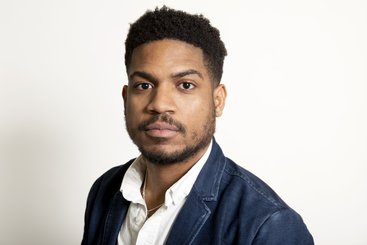
3. Tackling fossil fuels
The decision text from the first twenty-five COPs does not mention fossil fuels – a mindboggling omission given that burning coal, oil and gas is the primary driver of climate change.
The COP26 cover decision pledged ‘efforts towards the phasedown of unabated coal power and phase-out of inefficient fossil fuel subsidies’. Even this development remains relatively weak: terms like ‘unabated’ and ‘inefficient’ provide cover for continued fossil energy production and consumption, even though clean alternatives now offer some of the cheapest electricity in history.
While there is a legitimate debate to be had about the role of gas in the energy transition, the COP28 Presidency does not approach this debate from a neutral position. The host of the annual negotiations, the United Arab Emirates, has some of the largest oil and gas reserves in the world. The CO28 President-Designate, His Excellency Dr Sultan Al-Jaber, is also the CEO of the immense Abu Dhabi National Oil Company (ADNOC). Civil society’s fears about a conflict of interest have proven well-founded: leaked documents reveal that the UAE planned to use its role as host of the UN climate talks as an opportunity to strike oil and gas deals.
The COP28 Presidency is expected to facilitate the negotiations in a way that maximises climate ambition. Civil society will be monitoring the cover text that the UAE proposes on energy decarbonisation, particularly flashpoints such as:
- ‘phase-out’ versus ‘phasedown’;
- ‘fossil fuels’ versus ‘coal’;
- The inclusion of the word ‘unabated’; and
- The term ‘fossil fuel emissions’ rather than ‘fossil fuels’.
Want to know more?
Follow Andrew Herscowitz (LinkedIn, Twitter) and listen to the podcast:
Think Change episode 13: how do we solve the fossil fuel problem?
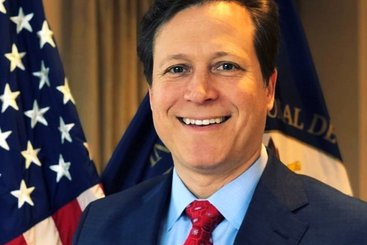
4. The Global Goal on Adaptation
Up to 3.6 billion people live in contexts that are highly vulnerable to climate change. Extreme weather events are already exposing millions to severe water scarcity and acute food insecurity, and the impacts of climate change will only become more frequent and severe as average global temperatures rise. Adaptation is therefore imperative.
Negotiators arriving in Dubai are hoping to finalise the framework and targets for the Global Goal on Adaptation (GGA).
The GGA was established in the Paris Agreement in 2015 to build political will and unlock finance for resilience. But translating these lofty ambitions into a comprehensive framework with measurable indicators is difficult given that successful adaptation depends on local contexts and community needs.
What should the GGA framework ideally encompass? We are looking for common methods and metrics for:
- measuring climate risks in critical sectors such as agriculture, ecosystems, fisheries, public health, waste and water;
- identifying and prioritising adaptation options;
- developing investment and financing plans; and
- setting targets and measuring progress.
A robust GGA framework could help close the adaptation finance gap in developing countries, currently estimated at $194-366 billion a year. But finance is negotiated in a separate track at the COPs – and is even more disputed than the GGA (below).
5. Quality assuring climate finance
Climate finance has long been a toxic issue in the international negotiations, but it has been particularly contentious since developed countries failed to deliver on their promise of providing $100 billion a year in 2020 and 2021.Developed countries look likely to have finally fulfilled their pledge in 2022, although the self-reported data have not yet been verified.
Now the spotlight is likely to pivot to the quality of international climate finance. Developed countries have long been criticised for the large share of finance flowing to climate change mitigation relative to adaptation and for the fragmented delivery of climate finance, which imposes high transaction costs on recipients.
However, progress is being made on both fronts.
ODI research confirms that developed countries are on track to double adaptation finance by 2025. Indeed, most northern European donors already provide a balance of mitigation and adaptation finance. By comparison, the US stands out among large economies for its poor performance. We calculate that it should have provided $17.4 billion of adaptation finance in 2021. In fact, the US provided just $3.6 billion – 21% of its fair share.
Developed and developing countries are also working together to reduce the project-by-project approach to climate finance. ‘Country platforms’ are government-led partnerships that aligns national development goals with global climate goals, strategically using international concessional finance to help overcome political and economic tensions between the two. South Africa’s Just Energy Transition Partnership (JETP) is the best known example, but country platforms are enjoying new momentum thanks to an endorsement by the G20.
Climate finance wonks will therefore be on the lookout for decision text articulating what better quality climate finance might look like, as well as updates on the country platforms in Indonesia, Senegal, South Africa and Viet Nam.
6. Scaling climate finance for conflict-affected states
People living in places affected by armed conflict, violence and fragility are at heightened risk from the adverse impacts of climate change. Governments and communities in these contexts lack the institutions and support needed to anticipate, absorb and adequately adapt to shocks.
Yet these countries receive very little climate finance, and far less than more stable areas. In Somalia, for example, climate finance inflows in 2019-20 amounted to less than 1% of the amount which the Government says is required to adapt to climate change.
Scaling up climate finance to these countries should be a critical issue at COP28, particularly in the context of discussions about the New Collective Quantified Goal (which replaces the $100 billion climate finance goal from 2025) and the Loss and Damage Fund.
COP28 will be the first UN climate conference to have a Relief, Recovery and Peace Day (3 December), and will be releasing a Declaration on Climate, Relief, Recovery and Peace which calls for “bolder, collective action” to scale up climate finance and action in fragile and conflict-affected situations.
It isn’t just about scaling up finance (although this is critical – see ODI’s new analysis of the barriers Somalia encounters in accessing climate finance). To be successful, climate action in conflict-affected states must address the drivers of people’s climate vulnerability and exposure – which include poverty, conflict, corruption, abuse and instability – and help strengthen systems and institutions, so that people have more options to manage challenges and embrace opportunities.
Doing so will require more joined-up, risk-informed action among all actors working in fragile areas, and a shiftaway from simply coping with crises, towards building more long-term, systemic resilience. It will also involve learning how to work with non-state actors. COP28, then, must move the conversation further than simply addressing the conflict blind spot in climate finance, and stimulate discussion about what “bolder, collective action” might actually look like in fragile and conflict-affected situations.
Want to know more?
Follow Dr Rebecca Nadin (LinkedIn) and listen to the podcast:
Think Change episode 15: the climate and conflict double challenge – has COP27 delivered?
